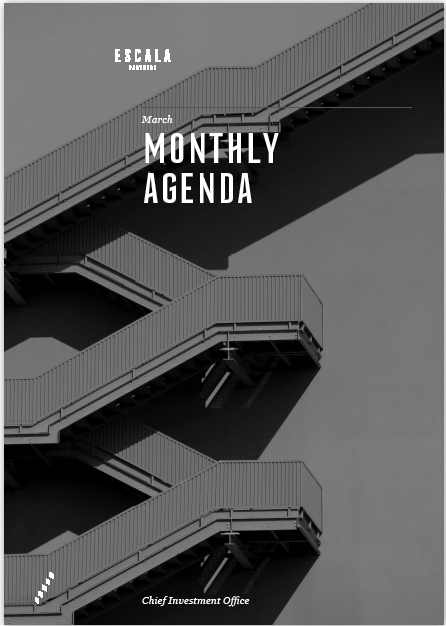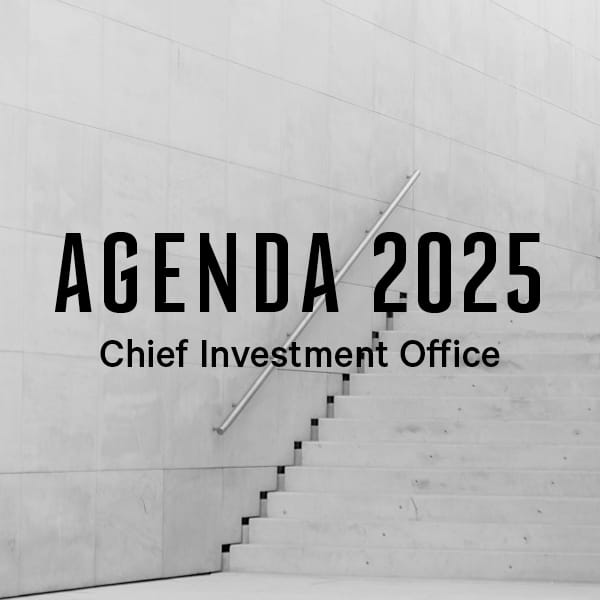-
The long and winding road

The road to a recession is long and winding. The journey typically begins in the bond market, then passes through the equity market, influencing the rate hike cycle along the way before finally arriving at a recession anywhere from 7 to 24 months later.
We haven’t quite embarked on this journey just yet, the bond market at this stage is still pointing to slower growth but not a recession, but we may not be too far from it. What should investors expect when the final boarding call is made?
The path that leads to a recession is reflected in the table below. The table documents past yield curve inversions and the time from those inversions to an equity market peak, a rate hiking cycle peak and ultimately a recession.

Three points can be made about the table:
– First, the bond market is a good leading indicator of recession in the economy. On average, the yield curve has given a 14 month heads up of a recession ahead but can range from 7-24 months.
– Second, an inversion is not necessarily immediately bad for equities. On average, the S&P500 has risen by 11.2% after the curve inverts.
– Third, in each of the past episodes, the US Federal Reserve has continued to raise interest rates past the point of inversion. It could be argued that this was the policy mistake that ultimately led to a recession. In the modern era the Fed has been more sensitive to the signals being sent by the bond market. On average, the rate hike cycle has ended just over 3 months after the inversion in the past 30 years compared with 10 months in the 40 years prior. Of course the difference now is inflation, the current high level of which may mean the Fed is less responsive to an inversion this time.
That is the history, what should we expect in this current rate hike cycle ?
-
The bond market starting point

Credit is the blood that flows through the economy that makes it grow. The cost of that credit is determined by the bond market being the conduit as it is for central bank monetary policy decisions. It is for this reason, when looking for what is ahead for the economy, investors should always begin with the bond market.
What is the bond market telling us at the moment?
Certainly the market has been warning of slower growth ahead for some time. The chart below shows how the steepness of the yield curve (the difference between long-term yields (10-year) and short-term yields (2-year)) has changed through time. When the yield curve is steepening, as was the case for the 12 months from the bottom of the pandemic in March 2020, it suggests faster economic growth ahead. When the curve is flattening, as it has been doing since March 2021, it suggests slower growth ahead.
Chart 1: US yield curve flattening pointing to slower economic growth ahead (bpts)

Source: Bloomberg
An “inverted” yield curve is when long-term yields fall below short-term rates – the chart above moves below zero. Under such circumstances, the bond market is suggesting growth in the future is going to be so weak that interest rates in the future will need to be reduced – in other words, a recession. With just one exception (1966) every yield curve inversion has led to a recession in the US.
There are a couple of interesting points to make about the above chart.
– First, it shows we are closer to the point of inversion than at anytime in the past two-and-a-half years.
– Second, the yield curve normally begins to flatten after the central bank begins to raise interest rates. The last rate hike cycle in the US began in December 2015 and continued to December 2018. The curve began flattening once the rate hike cycle had been underway for a year and continued up to 3 months before the Fed stopped raising interest rates. This time, the curve has been flattening for a full year before the rate hike cycle began. Clearly, the bond market feels the Federal Reserve is late to the rate hike cycle.
The Federal Reserve now seems to have gotten this message. We should expect to see it act faster in raising interest rates than it has done in the past.
The concern is, whenever something travels at speed there is a risk of an accident. Markets prefer to be gradually guided down the rate hike path, not jolted down it. In the past six months, the Federal Reserve has done just that. Jolting the market by lifting its expectations of rate hikes from zero in September, to three in December, to now 7 in March. The Fed Chair is even talking about lifting rates in much larger increments than traditionally has been the case.
The chart below shows how this jolt is affecting markets. The chart shows how the cost of borrowing has risen significantly for both households and corporates just in the past three months. The move, particularly for households, has been large and rapid.
Chart 2: The cost of borrowing for households (left) and corporates (right) (%)

Source: Bloomberg
-
The equity market and policy peak along the way

Equity markets typically peak after the yield curve has inverted because it takes time for the higher cost of borrowing to feed into changes in corporate and household behaviour.
The jolt in rate hike expectations that we have seen from the Fed in the past 6 months has piled on significant pressure for households and corporates in a relatively short period of time. Fortunately, households and corporates are well placed to absorb this jolt.
Unlike in Australia, US households have a relatively low level of debt-to-income. The chart shows US household debt is back to levels last seen in 2001. So while interest rates are rising, the impact on the household budget will be small relative to history.
Chart 3: US household exposure to interest rates and energy prices

Source: Bloomberg
While the war in Ukraine is putting upward pressure on energy prices, the chart on the right above shows the share of total US consumption spent on energy goods and services is low at just 4.2%. This is well down from the peak of 9.5% in 1980 and comes despite record gasoline prices.
The labour market in the US also remains robust meaning anyone who would like a job can get one. Indeed, there are more job openings in the US currently than there are people to fill them.
US corporates are similarly in a healthy poistion with cash on balance sheet at record highs (as reflected in Amazon’s recently announced $10 billion buyback plan) and leverage ratios at record lows.
Corporate profit margins are also at record highs. While the higher costs of transport, labour and energy will pressure that, for the most part, margins are holding up. Bloomberg have noted that 62% of reporting companies have beaten forecasts for net income margin – though less than half did on operating margin. Bloomberg also find that fourth quarter earnings growth is expected to come in at 28%.
-
Recessions’ Door

The final destination on this long and winding road is recession. In the past 65 years that has been as long as 24 months after the inversion.
The change in behaviour that results from higher borrowing costs for corporates and households is a reduction in spending and or a cut in costs. This is when the economy begins to be affected. Unemployment begins to rise, business investment begins to fall, consumption eases and ultimately corporate earnings fall.
In our view we are still some way from recessions’ door. Unemployment has been falling since April 2020 and now stands at 3.8%. US households’ still have two trillion in excess savings as a cushion.
There is still a need to be cautious, however, and to be active in your investment style as idiosyncratic risk is high. How a company is performing depends more than ever on how well it has managed its inventory cycle and its supply chain; how exposed it is to higher commodity prices and labour costs; and how it has managed its debt levels.
Such is the case with vehicle manufacturers (hit by ongoing semiconductor shortages) and with food and beverage manufacturers (hit by higher input costs).
Even within industries, idiosyncrasies are present. In the home improvement sector Lowe’s reported a stronger margin due to improved productivity while Home Depot reported a decline in margin and is struggling to meet high demand given its low inventory levels.
Not all retailers are the same either. Target has not been able to pass on all costs and its margin has fallen as a result. Walmart on the other hand beat fourth quarter earnings estimates and announced a share buyback of at least $10 billion. The company said it navigated supply chain costs well and a decline in Covid costs helped offset other costs. Walmart avoided a margin decline despite higher transportation, labour and merchandise costs.
The longer higher input costs, including higher wages, transport and commodity prices remain, the more likely it is that behaviour will change in a way that impacts the economy. Navigating the long and winding road is hard enough. The global pandemic and now the war in Ukraine has made that task so much harder.
-
Investment Implications

At the very least, we expect volatility to remain a feature of listed markets this year. We have been careful to only take on the investment risks worth taking. In this regard we have avoided fixed rate bond duration risk preferring shorter dated and floating rate bonds. We have reduced our allocation to emerging markets, small cap companies and to European large caps. We have hedges in place if commodities and inflation remain elevated and have most recently increased our allocation to private equity out of public equity. Overall, we are now slightly underweight listed equities but with a preference for Australia.
We remain 100% unhedged in our listed international equities exposure as we see this as a safety net in the event global equities fall (as the USD tends to rise in that event). We believe private markets will be a less volatile part of the market while still giving us exposure to equity risk.













